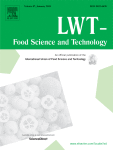Ver ítem
- xmlui.general.dspace_homeCentros Regionales y EEAsCentro Regional Tucumán - Santiago del EsteroEEA FamailláArtículos científicosxmlui.ArtifactBrowser.ItemViewer.trail
- Inicio
- Centros Regionales y EEAs
- Centro Regional Tucumán - Santiago del Estero
- EEA Famaillá
- Artículos científicos
- Ver ítem
Screening and characterization of potential probiotic and starter bacteria for plant fermentations
Resumen
Probiotics are mostly consumed as fermented or fortified food products in Europe. There are two important factors in the selection of probiotic candidates regarding the potential health benefit; their viability and number when consumed, and their survival and persistence in the gastrointestinal tracts. This study focusses on the selection of potential probiotics to be used as starter culture in plant-based fermented foods. Lactic acid bacteria isolated
[ver mas...]
Probiotics are mostly consumed as fermented or fortified food products in Europe. There are two important factors in the selection of probiotic candidates regarding the potential health benefit; their viability and number when consumed, and their survival and persistence in the gastrointestinal tracts. This study focusses on the selection of potential probiotics to be used as starter culture in plant-based fermented foods. Lactic acid bacteria isolated from quinoa and amaranth were tested in vitro for their sensitivity to antibiotics, tolerance to gastrointestinal stress factors and adhesion to gut epithelial cells. Only five strains had suitable antibiotic profile to be used as probiotics and all of them were tolerant to lysozyme, bile salts, and had similar adhesion capacity. Lactobacillus plantarum Q823, administered as starter culture in a fermented quinoa drink, was selected for the human in vivo tests, because of its best in vitro tolerance to low pH. This strain was able to survive and persist at detectable levels (5–7 Log10 CFU/g feces) in the gastrointestinal tracts for at least seven days after the end of administration. Thus, L. plantarum Q823 has been identified as a suitable starter and a potential probiotic in fermented quinoa-based products.
[Cerrar]

Autor
Vera Pingitore, Esteban;
Jimenez, María Eugenia;
Dallagnol, Andrea Micaela;
Belfiore, Carolina;
Fontana, Cecilia Alejandra;
Fontana, Paola Daniela;
Wright, Atte von;
Vignolo, Graciela Margarita;
Plumed Ferrer, Carme;
Fuente
LWT - Food Science and Technology 71 : 288-294 (September 2016)
Fecha
2016-09
ISSN
0023-6438
Formato
pdf
Tipo de documento
artículo
Palabras Claves
Derechos de acceso
Restringido
 Excepto donde se diga explicitamente, este item se publica bajo la siguiente descripción: Creative Commons Attribution-NonCommercial-ShareAlike 2.5 Unported (CC BY-NC-SA 2.5)
Excepto donde se diga explicitamente, este item se publica bajo la siguiente descripción: Creative Commons Attribution-NonCommercial-ShareAlike 2.5 Unported (CC BY-NC-SA 2.5)

